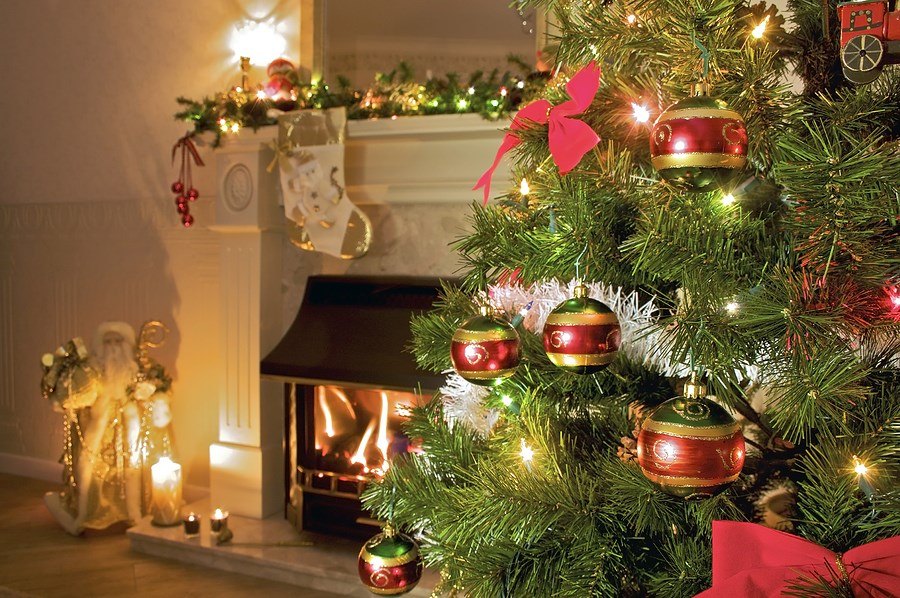Although greenery and trees have been used to celebrate the winter solstice for thousands of years, the Christmas tree tradition of bringing the tree indoors was started by Christians in the 16th century in Germany. Prior to that, both Tallinn in Estonia in 1441 and Riga in Latvia in 1510 claim that they had the first trees in their town squares to celebrate Christmas and New Year. Records show that in both locations people danced around the trees and then the trees were set on fire.
In Germany, the first indoor Christmas trees were decorated with edible things, such as gingerbread and apples. If an evergreen was not available or affordable, a wooden pyramid was built and decorated with greenery and edibles.
In North America the Pennsylvania German settlements had community trees as early as 1747, but in Britain Christmas trees were not used until sometime in the 1830s. They became popular on both sides of the Atlantic when Queen Victoria and Prince Albert had a Christmas tree set up in Windsor Castle in 1841.
In Victorian times, the tree would have been decorated with candles to represent stars. In many parts of Europe, candles are still used to decorate Christmas trees. I remember white candles on our Christmas tree when I was a child in Germany. The tree was decorated by my mother behind a closed door to be revealed on Christmas Eve. The candles were carefully placed, lit and monitored. Candles could be placed strategically on the ends of branches because the trees had a more open branch structure than commercial evergreens today.
When electricity was invented the first Christmas tree lights were very expensive. Reasonably affordable strings of lights first became available in 1903.
The first artificial trees in the Edwardian period were made of ostrich feathers. Since then papier mâché, metal, glass, and many different types of plastic have been used at various times.
There are good reasons to use live Christmas trees. Commercial Christmas trees are grown on tree farms, often in areas not suitable for crop production. Tree farms employ people to plant, maintain and harvest trees. The trees are sheared to control shape and to produce a dense tree. Trees, whether on farms or in our forests, absorb carbon and release oxygen.
The most popular evergreens for Christmas trees are balsam fir, white spruce and Scots pine. Both balsam fir and Scots pine are excellent for holding their needles, while white spruce is good. We have an abundance of balsam fir and white and black spruce, all great for a natural Christmas tree. I will be looking for my perfect tree in the woods this year.




